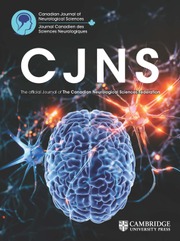Article contents
Optimum Symptomatic Control of Parkinson's Disease with Dopaminergic Therapy
Published online by Cambridge University Press: 05 January 2016
Abstract:
This paper presents a review of the literature on the therapeutic action and the side effects of the two main dopaminergic agents: L-DOPA/decarboxylase inhibitor (L-DOPA/DI) and bromocriptine (Parlodel ®) used either as monotherapy or in combination in patients with Parkinson's disease. The combination of L-DOPA/DI and bromocriptine gives the best therapeutic efficacy (49% improvement) in the total score (bradykinesia, rigidity and tremor). However, treatment by monotherapy or combination gives the same pattern of activity: greatest improvement in tremor, followed by rigidity and bradykinesia. Improvement observed in the short term is not sustained over longer periods of time for monotherapy with either drug. The short-term side effects are similar for each treatment, whereas long-term complications (dyskinesia, end-of-dose deterioration and on-off phenomenon) appear only when levodopa is used, alone (high incidence) or in combination with bromocriptine (low incidence). The overall optimum treatment is obtained with a combination of L-DOPA/DI and bromocriptine.
- Type
- Research Article
- Information
- Copyright
- Copyright © Canadian Neurological Sciences Federation 1987
References
REFERENCES
- 4
- Cited by


